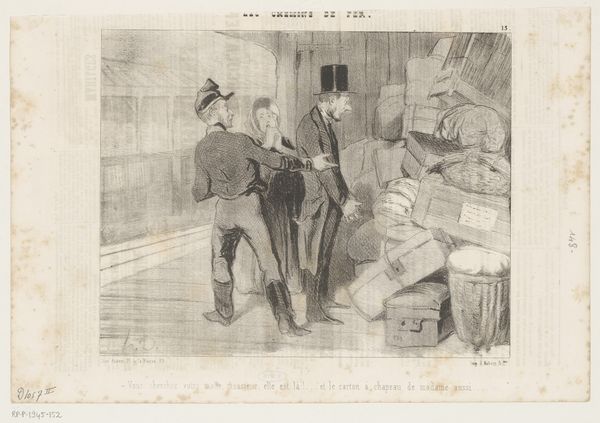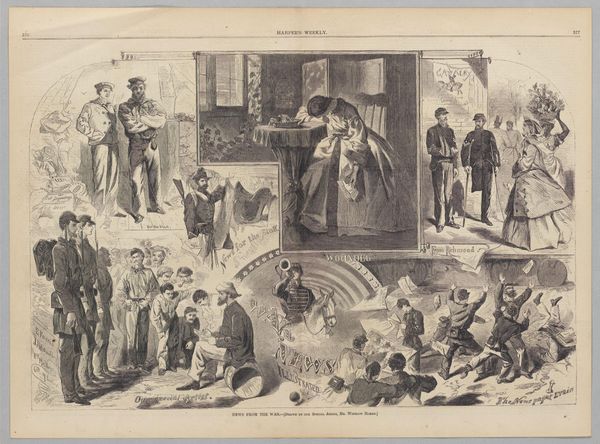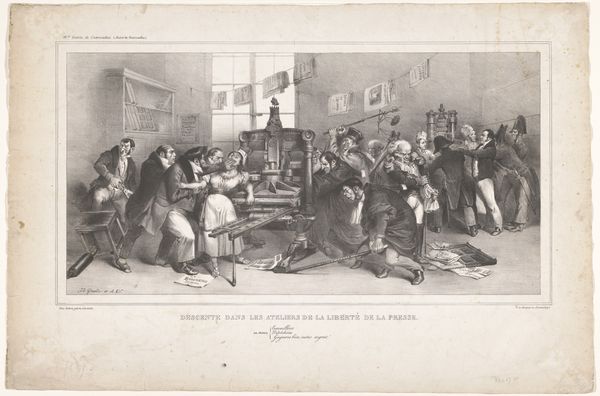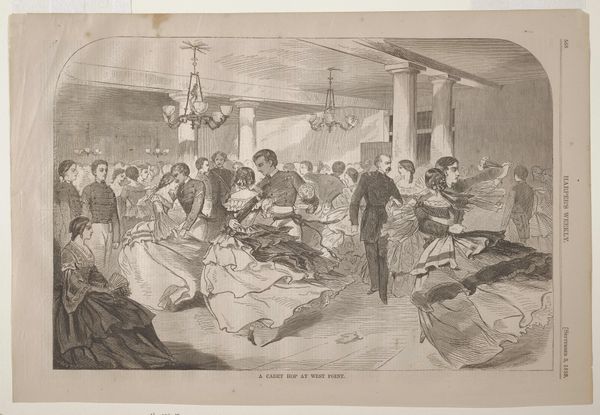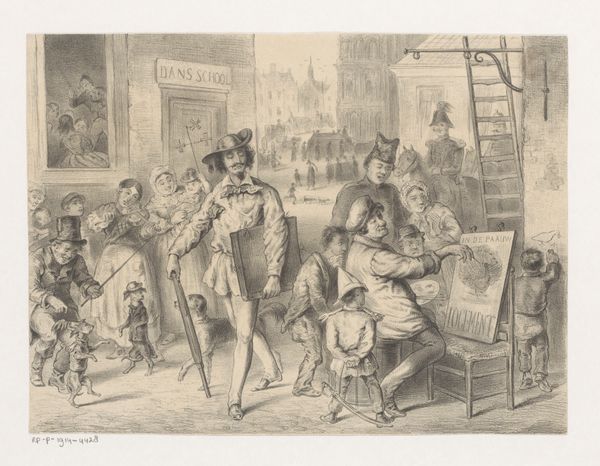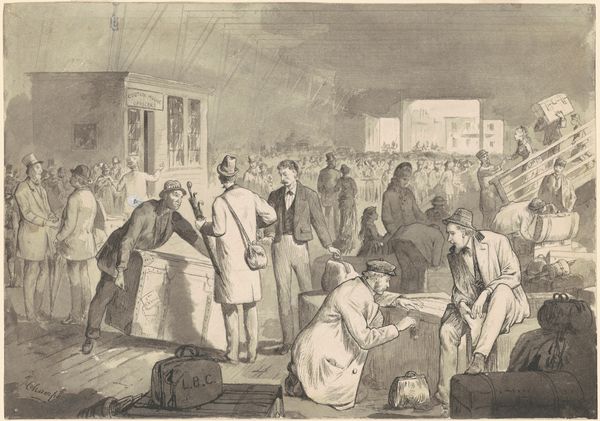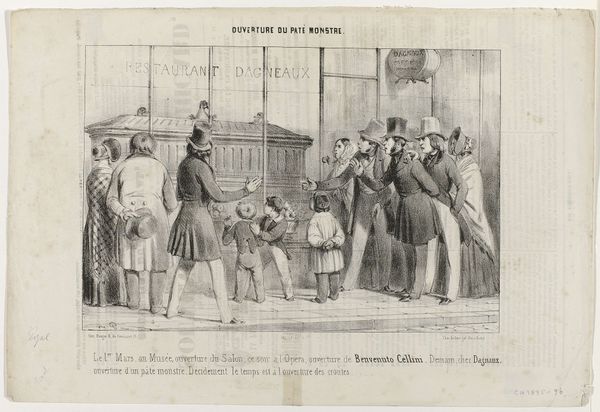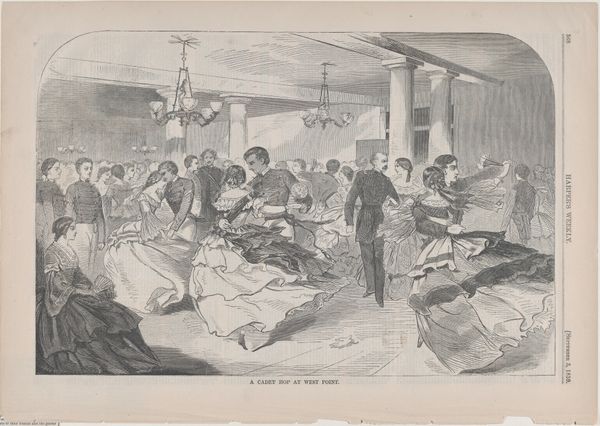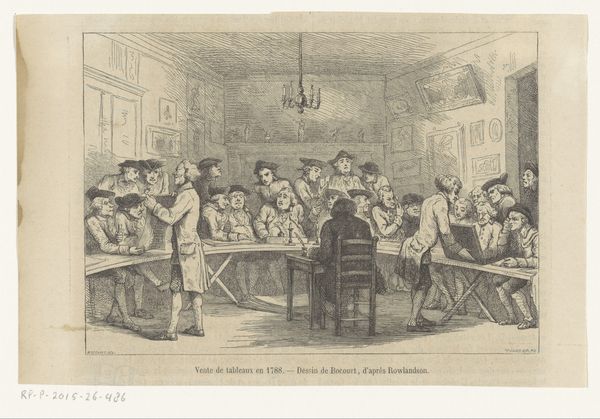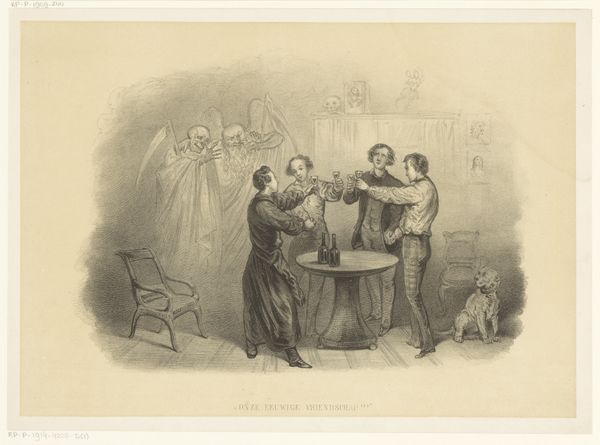
lithograph, print, engraving
#
16_19th-century
#
lithograph
# print
#
genre-painting
#
engraving
#
realism
Dimensions: height 210 mm, width 267 mm
Copyright: Rijks Museum: Open Domain
Curator: The linear perspective and the sheer amount of detail in this print give a comprehensive glimpse into a mid-19th century lithography workshop. Editor: Yes, my initial reaction is of being drawn into the visual architecture here—the rhythmic repetition of vertical supports receding into a softly-lit industrial space, so different than any aristocratic painting. But the artist is identified as Carel Christiaan Antony Last, so where does he fit in the workshop here? Curator: Precisely, this image entitled, "Vrede van Parijs, 1856," which translates to "Peace of Paris, 1856," captures the nexus of labor, industry, and royal patronage of the period, offering insight into socio-economic dynamics. Notice how those presumably well-to-do gentleman observing have plenty of opportunity to learn, in effect, watching workers at work. Editor: Absolutely, the lithographic print captures, in great detail, the grimy industrialism behind the scene. And it's this combination of visual analysis with symbolic underpinnings and historical context. See how the tonal shifts add a great value range! Curator: These types of printing operations contributed massively to the shaping of public consciousness and the rise of mass communication. Who can access these artworks? Who benefits from these artworks, at a political level? Editor: Right, and if you examine the texture carefully, you can note the density and clarity that define the aesthetic value within industrial reproduction. The details in this workshop shows Last was clearly in control of every line! Curator: A lot can be read through it—the gendered division of labor, for example. Women and men each holding a specific, and different place within this machinery, so to speak. Editor: Agreed! Last gives us so much data in his printmaking—such careful detail is a technical feat. Curator: Viewing the image beyond its formal qualities opens the work to these critical discourses and reveals hidden social relations, while simultaneously making one rethink the nature of visibility within labor practices. Editor: It really gives a powerful glimpse behind the scenes. So much so, that Last’s orchestration really enhances that workshop-esque impression of organized detail!
Comments
No comments
Be the first to comment and join the conversation on the ultimate creative platform.


